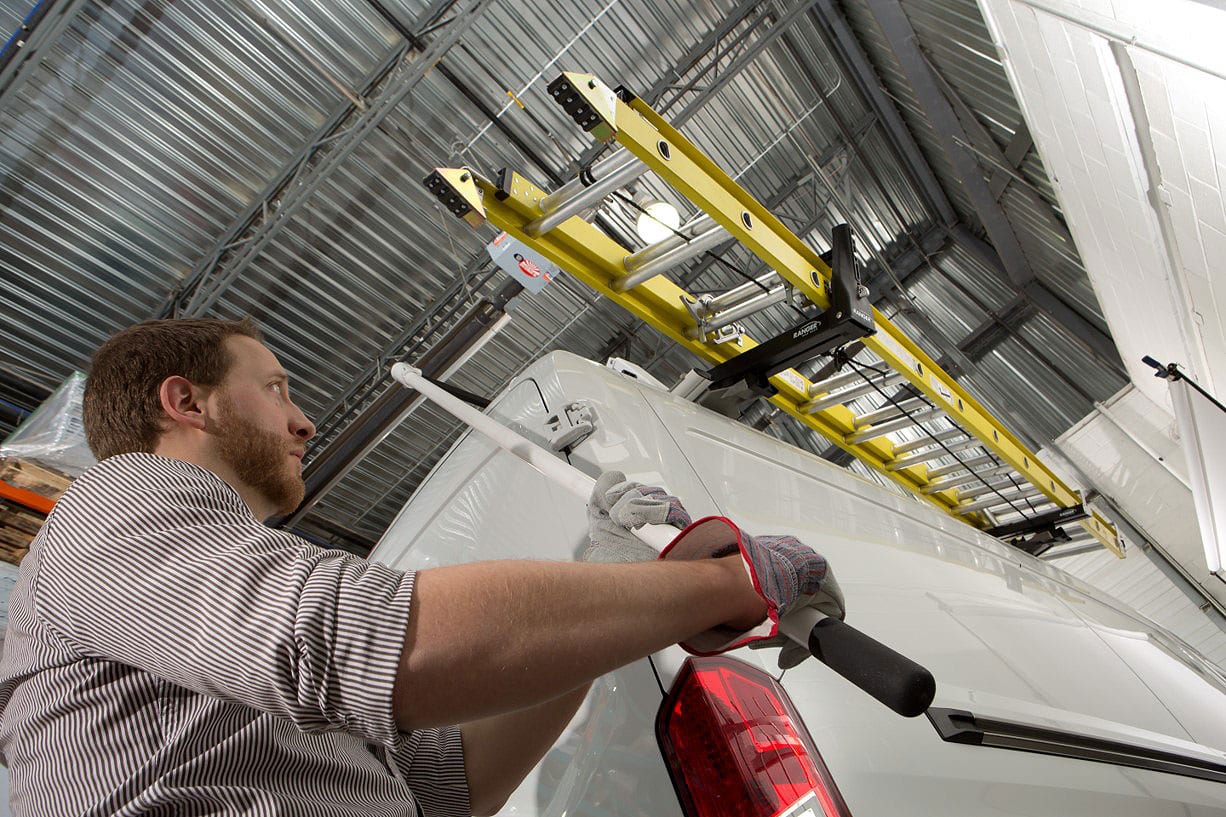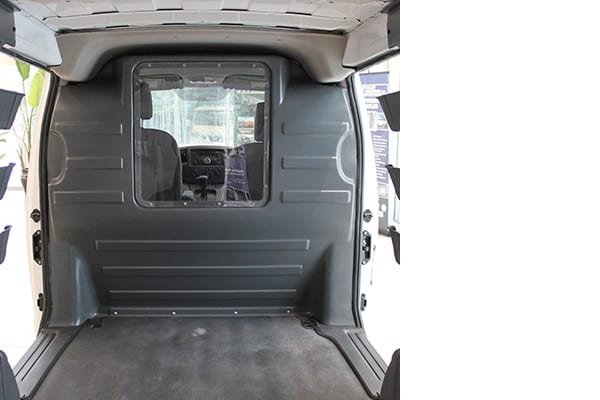Dislocated shoulder, herniated disc, torn meniscus in the knee — these are just a few examples of injuries that are caused overexertion and repetitive motion. According to the Bureau of Labor Statistics, musculoskeletal disorders (MSDs) alone account for 33 percent of all worker injury cases in the U.S., and the service sector is among the top three at-risk occupations, accounting for 25 percent of all work-related MSDs. Transportation comes in second at 20 percent.
When service techs strain to reach a ladder on top of the van or lift heavy objects from awkward angles, they increase their risk of a debilitating injury. And depending on the size of your company, the costs incurred from just a single injury — from workers compensation claims and lost workdays to training a replacement — could cripple your budget.
So, what can you do to protect your technicians (and employer) from such injuries in the field? Here are three tips:
1. Upfit high-roof vans with drop-down or interior rack systems.
With the recent influx of high-roof, Euro-style cargo vans in the U.S. market (think the Ford Transit and Ram Promaster), many service fleets are moving away from a stationary roof-mounted ladder rack to storage systems that don’t require techs to strain by reaching up from the side of the vehicle to unload, say, a heavy ladder.
“Stationary ladder racks on the mid- or high-roof cargo vans can be challenging to operate, especially for technicians under 5-foot-8,” says Ken Gillies, manager of Truck Excellence for Element Fleet Management, a provider of fleet management and maintenance services for North American businesses.
One solution, says Gillies, is a drop-down ladder rack, which lowers to a level where the ladder can be easily loaded and unloaded, and then raises to its secure travel position with a mechanical or pneumatic assist. This way, instead of having to reach up to the rack, technicians can bring the rack down to them.
Depending on the ladder size, a second option, says Gillies, is a rack installed inside the van’s cargo area, so that your technician can easily access the ladder from a safe position. Adrian Steel’s Ladder Keeper system can carry up to a six-foot ladder in a regular wheelbase van and an eight-foot ladder in a long wheelbase van.
2. Evaluate loading and unloading patterns with ergonomics in mind.
Cargo placement inside the van can make a significant impact on worker safety. For example, what are the high-use items in your inventory? Are they positioned inside the van where they’re easily accessible for the technician? If not, your techs could be putting themselves at risk by having to reach inside the van at awkward angles, several times a day, to grab those parts for each job.
And what about heavier pieces of equipment? Are they positioned where your techs can lift them safely and efficiently out of the van? One way to ensure proper ergonomics, says Gillies, is to move heavy items off the floor and store them on a shelf about 12 to 18 inches above the floor to reduce the bending and twisting motions needed to remove and re-stow cargo.
The key takeaway? Tailor the cargo shelving, bin configurations, and load placement to suit the technician’s typical workflow for maximum productivity and safety.
3. Consider contoured cab partitions.
Cab partitions are installed behind the driver and passenger seats in a cargo van to serve as a protective barrier between the vehicle cabin and cargo area. But a common challenge with standard bulkheads is that they’re typically installed as close as possible behind the cabin seats to maximize cargo space. This limits how far a seat can be pushed back and recline, which can lead to lower back pain and fatigue depending on how much time the driver spends behind the wheel each day.
One solution offered by upfitters, such as Masterack, is a recessed bulkhead built out of composite material and designed with a contour behind the driver to allow for optimal seatback recline.
The Bottom Line
When you spec service vans for improved ergonomics, you create a safer work environment that results in higher employee morale and productivity. And that’s not only good for workers — that’s just good business, too.




Share this: